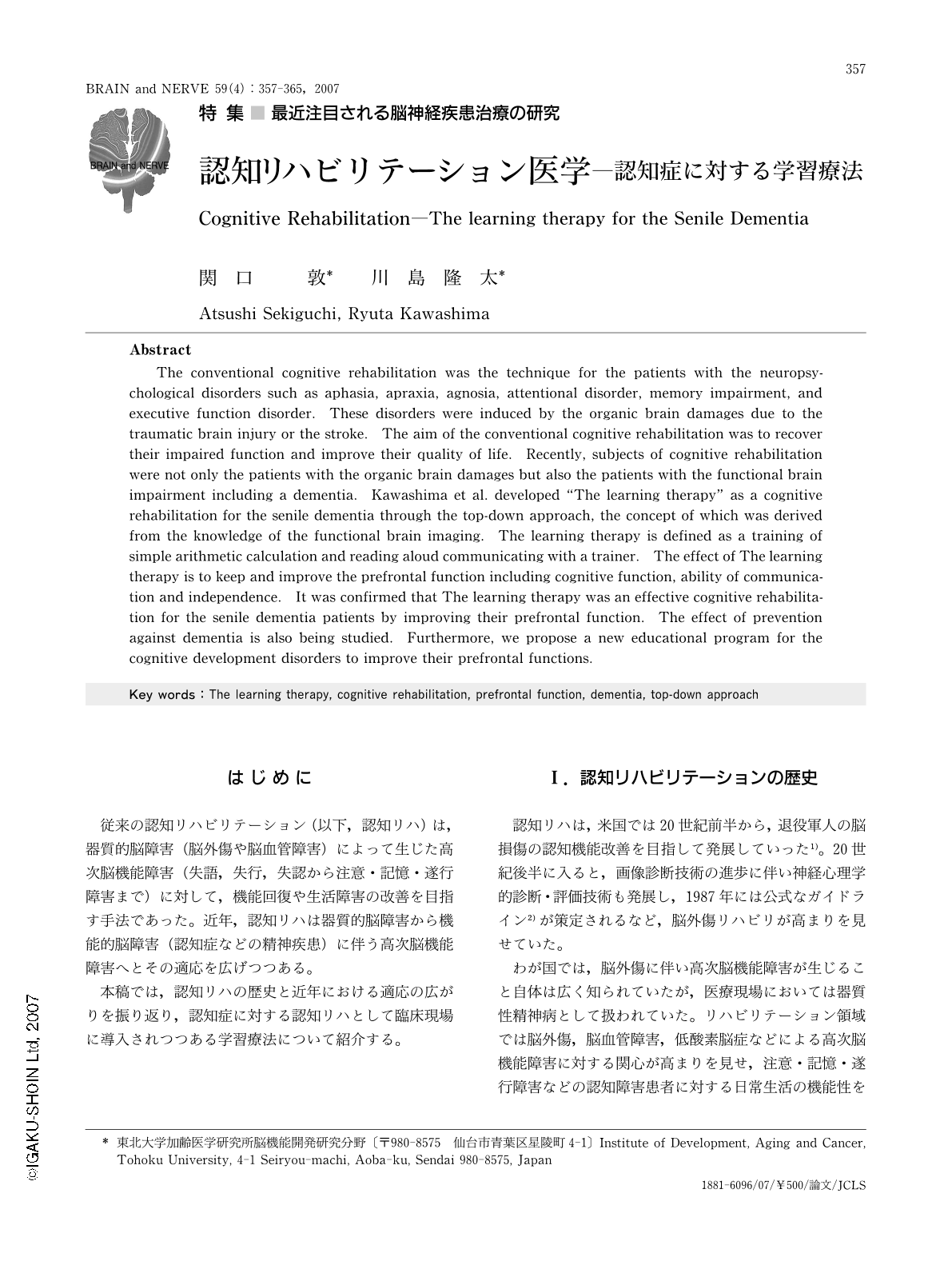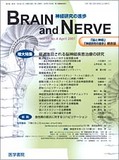Japanese
English
- 有料閲覧
- Abstract 文献概要
- 1ページ目 Look Inside
- 参考文献 Reference
はじめに
従来の認知リハビリテーション(以下,認知リハ)は,器質的脳障害(脳外傷や脳血管障害)によって生じた高次脳機能障害(失語,失行,失認から注意・記憶・遂行障害まで)に対して,機能回復や生活障害の改善を目指す手法であった。近年,認知リハは器質的脳障害から機能的脳障害(認知症などの精神疾患)に伴う高次脳機能障害へとその適応を広げつつある。
本稿では,認知リハの歴史と近年における適応の広がりを振り返り,認知症に対する認知リハとして臨床現場に導入されつつある学習療法について紹介する。
Abstract
The conventional cognitive rehabilitation was the technique for the patients with the neuropsychological disorders such as aphasia, apraxia, agnosia, attentional disorder, memory impairment, and executive function disorder. These disorders were induced by the organic brain damages due to the traumatic brain injury or the stroke. The aim of the conventional cognitive rehabilitation was to recover their impaired function and improve their quality of life. Recently, subjects of cognitive rehabilitation were not only the patients with the organic brain damages but also the patients with the functional brain impairment including a dementia. Kawashima et al. developed “The learning therapy” as a cognitive rehabilitation for the senile dementia through the top-down approach, the concept of which was derived from the knowledge of the functional brain imaging. The learning therapy is defined as a training of simple arithmetic calculation and reading aloud communicating with a trainer. The effect of The learning therapy is to keep and improve the prefrontal function including cognitive function, ability of communication and independence. It was confirmed that The learning therapy was an effective cognitive rehabilitation for the senile dementia patients by improving their prefrontal function. The effect of prevention against dementia is also being studied. Furthermore, we propose a new educational program for the cognitive development disorders to improve their prefrontal functions.

Copyright © 2007, Igaku-Shoin Ltd. All rights reserved.


